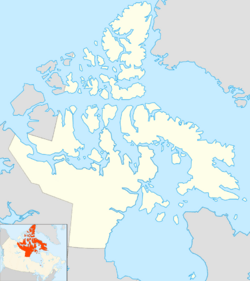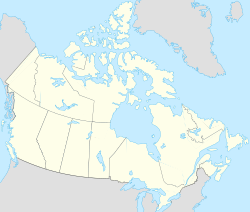Whisler Island facts for kids
| Geography | |
|---|---|
| Location | Lake Hazen |
| Coordinates | 81°40′08″N 72°19′41″W / 81.668793°N 72.328105°W |
| Archipelago | Canadian Arctic Archipelago |
| Administration | |
|
Canada
|
|
| Nunavut | Nunavut |
| Region | Qikiqtaaluk |
| Demographics | |
| Population | Uninhabited |
Whisler Island is a small, uninhabited island located in the far north of Canada. It's found within Lake Hazen, which is a large lake on Ellesmere Island. This makes Whisler Island quite special because it's an "island within an island"! It's part of the Qikiqtaaluk Region in Nunavut, Canada's largest and northernmost territory. The island is also inside Quttinirpaaq National Park, a protected area known for its amazing Arctic landscapes.
Contents
Where is Whisler Island?
Whisler Island is located in one of the most remote places on Earth. It sits in Lake Hazen, which is the largest lake north of the Arctic Circle in North America. Lake Hazen itself is on Ellesmere Island, a huge island that is part of the Canadian Arctic Archipelago. This archipelago is a group of many islands in the Arctic Ocean.
Ellesmere Island and Quttinirpaaq National Park
Ellesmere Island is the third-largest island in Canada. It's a land of glaciers, ice caps, and polar deserts. The northern part of Ellesmere Island is home to Quttinirpaaq National Park. This park is one of the world's most northerly protected areas. It helps to protect the unique Arctic environment, including its wildlife and plants. Whisler Island, being inside this park, is part of this important natural area.
How Whisler Island Got Its Name
Whisler Island was named in honor of Private William Whisler. He was a member of a famous Arctic exploration trip called the Lady Franklin Bay Expedition. This expedition took place in the early 1880s.
The Lady Franklin Bay Expedition
The Lady Franklin Bay Expedition was led by Adolphus Greely. Its main goal was to set up a scientific research station in the Arctic. The team explored parts of Ellesmere Island and gathered important information about the weather and geography of the region. Private William Whisler was one of the brave people who took part in this challenging journey. Naming the island after him was a way to remember his contribution to Arctic exploration.



